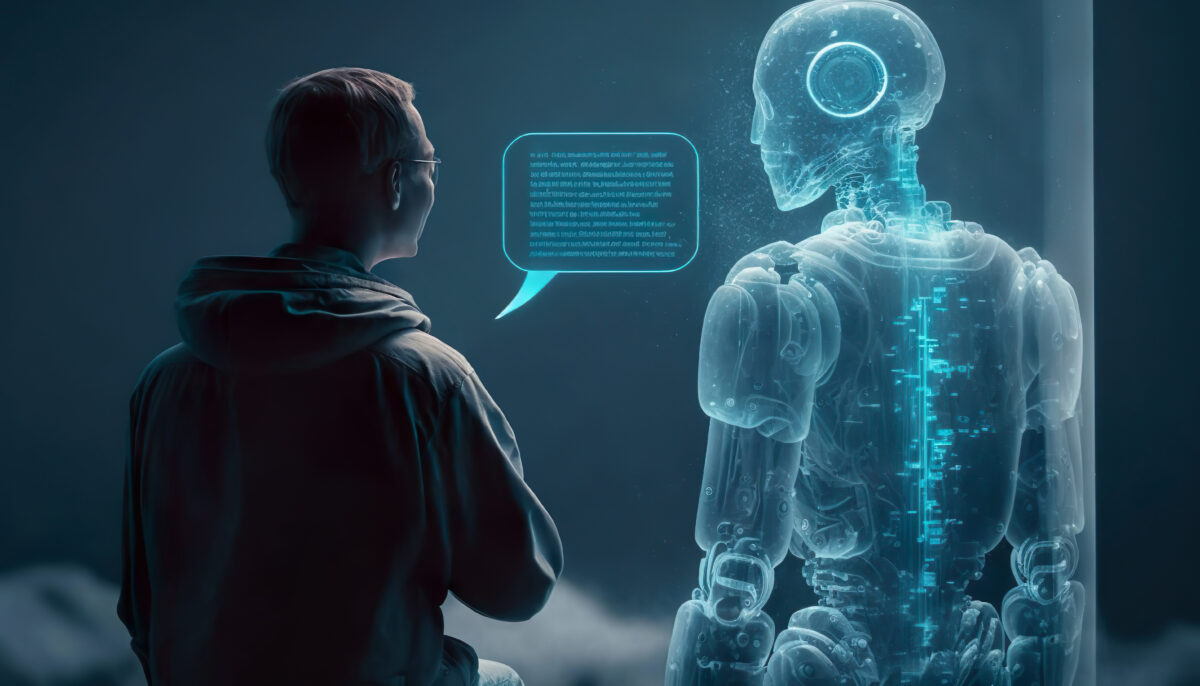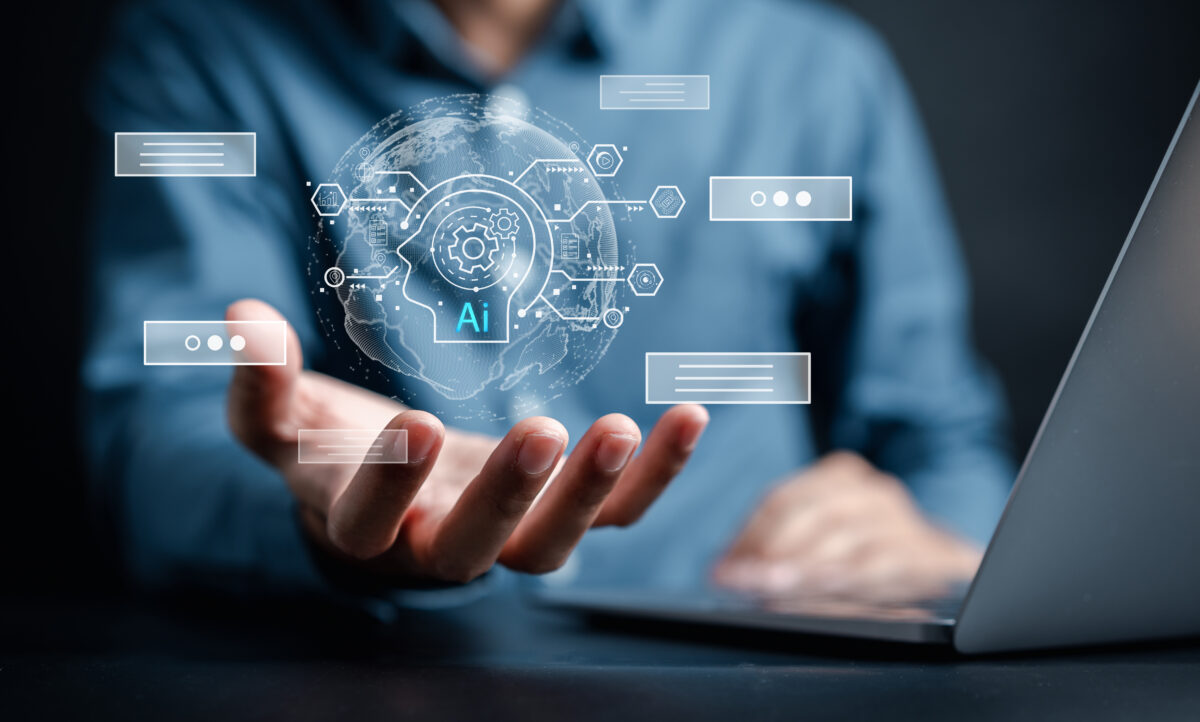Over the past year or so, generative artificial intelligence (GenAI) has been a hot topic in K-12 education. Following the public release of ChaptGPT in November 2022, many school districts, concerned about misuse, immediately blocked access to it and the other GenAI tools that followed. Understandably, educators wanted more time to assess potential issues and consider the educational impact of these tools. Many have since approved GenAI usage for teachers, but they continue to block access for students.
This head-in-the-sand approach, however, is both unrealistic and misguided. With the rapid proliferation of GenAI technologies in both higher education and the workplace, schools have a responsibility to prepare their students for future success in an AI-integrated world. Additionally, school bans on GenAI widen the digital divide and deny students and teachers the opportunity to leverage these tools for real teaching and learning benefits.
There is no doubt that districts need to ensure that AI is implemented responsibly by teachers and students to ensure safety, privacy, and ethical use. However, as schools hesitate about integrating the use of GenAI, they are missing a critical opportunity to proactively shape its use and role in education. Artificial intelligence isn’t going anywhere, and K-12 schools will be better served by making the necessary guidelines to get off the sidelines.

1. GenAI is here to stay.
The world of GenAI is rapidly evolving at an unprecedented pace, and while many districts may be delaying the adoption of these technologies, students definitely are not.
A recent study by Tyton Partners reports:
- 27% of college students reported being a regular user of GenAI.
- 69% of these students said they would continue to use these tools even if prohibited by their instructor or institution.
Current student usage is not limited to higher education though. According to a December 2023 report by ACT Inc. nearly half (46%) of high school students reported using AI tools, especially ChatGPT, to help them with their studies.
Generative AI technology is here to stay, and whether schools like it or not, students will experiment with it and teachers will encounter it in their classrooms. The majority of educators expect use of artificial intelligence tools will increase in their school or district over the next year, according to an EdWeek Research Center survey. Additionally, college usage numbers can expect to be even higher after the upcoming launch of ChatGPT Edu, expected this summer.
2. The job market will require AI-related skills.
Artificial intelligence is transforming the workforce, and businesses will expect our students to have skills working with and managing AI systems.
- 65% of organizations are regularly using GenAI in at least one business function—up from one-third from just last year, according to McKinsey’s latest Global Survey on AI
- The World Economic Forum reports that 75% of companies plan to implement generative AI by 2027.
As AI technology continues to evolve, the demand for AI-related skills and knowledge will continue to increase. While AI is sure to replace some jobs, it will also cause a massive wave of job creation and transformation.
According to the World Economic Forum’s Future Jobs Report 2023:
- The field of AI and Machine Learning is expected to create 1 million new jobs in the next five years—a predicted 40% growth.
- AI and machine learning specialists are among the top emerging jobs in the United States, with a projected growth rate of 74% over the next decade
To stay competitive in this evolving job market, students need to acquire AI-related skills and knowledge. Many universities and vocational schools are responding to these growing demands by offering AI-related courses and programs. However, while there are some high schools that have begun adopting and implementing AI career technical education (CTE) programs, many students do not feel they are gaining the necessary skills in K-12 for future workplace success.

3. Digital disparities will increase with inequitable access to GenAI tools.
One problem with the defensive approach to ban or restrict GenAI in education is that students can always find ways to circumvent these school-issued bans outside the classroom. ChatGPT and similar tools are accessible from home or non-school networks and devices, giving students with easy access to the internet and their own personal devices an advantage over those without.
TeachAI, an initiative that brings together education leaders and technology experts to assist governments and education authorities in teaching with and about AI, warns that “attempting to enforce broad bans on AI is a futile effort that widens the digital divide between students with independent access to AI on personal devices and students dependent on school or community resources.”
“The divide will only grow larger as generative AI tools become more powerful. Rather than merely adopting a punitive approach, institutions should educate students in the effective use of generative AI – and be prepared to provide AI tools where they can aid learning,” according to a recent report by the UK-based Higher Education Policy Institute (HEPI).
Public schools can help close this digital divide by ensuring equal opportunity for all students to learn about and work with generative AI, reducing current disparities and preparing all students to compete in the current and future job market.
“AI brings educational technology to an inflection point. We can either increase disparities or shrink them, depending on what we do now.” — Dr. Russell Shilling, innovation advisor and former Executive Director of STEM Initiatives at the U.S. Department of Education during the Obama Administration
4. GenAI has the potential to transform teaching and learning.
Yes, there are inherent risks with adopting GenAI technologies in schools, and districts should implement these tools with thoughtful guidance to promote responsible and ethical use. However, focusing only on fears of misuse and misinformation prevents districts from exploring AI’s potential to improve learning outcomes, support teacher instruction, and enhance educational equity.
GenAI technologies in K-12 education offer a wide range of benefits, enabling educators to personalize instruction, enhance student engagement, streamline administrative tasks, and facilitate effective decision-making processes. Students can use GenAI as a powerful learning aid, helping them better understand complex concepts, engage in creative problem solving, and develop critical thinking skills. In addition, GenAI promises to be a powerful tool for teacher efficacy, efficiency, and effectiveness, enabling teachers to concentrate more on engaging directly with students.
While GenAI technologies and K-12 use cases are constantly evolving, educators owe it to their school communities to fully explore how they can harness what is available now to enrich and improve the teaching and learning experience and best prepare their students for the future.
Districts Do Not Have to Go It Alone
How schools approach GenAI has serious implications for students and the future of education. Currently, progress in implementing AI in K-12 education is being driven by local school districts and state departments of education, with input from non-profits and industry partners. While this results in varied approaches and implementations, many do share common ground, and there are many resources and best practices to turn to for guidance.
Leaders in K-12 adoption of GenAI, such as the North Carolina Department of Public Instructions (NCDPI), are encouraging public schools to responsibly embrace AI and incorporate AI literacy for all staff and students. The NCDPI “advocates for the responsible integration of AI technologies in education, aiming to cultivate an educational environment that empowers each individual to reach their full potential and cultivates a lasting passion for continuous learning.” To support this goal, NCDPI has created GenAI implementation recommendations and considerations to assist K-12 schools with the development of guidelines for acceptable and responsible use of GenAI and training and literacy plans for both staff and students. This level of thoughtful guidance is what education leaders need to responsibly implement GenAI in their schools“ in a way that enhances the educational experience for students and teachers while upholding academic integrity, protecting data privacy, and promoting good digital citizenship.”
According to the Office of Educational Technology, “Everyone in education has a responsibility to harness the good to serve educational priorities while also protecting against the dangers that may arise as a result of AI being integrated in educational technology.” While there are challenges and risks associated with GenAI, thoughtful, proactive adoption of GenAI enables educators to ensure all students will be prepared for success in an AI-integrated world.
No matter where your district is on its AI implementation roadmap, Lightspeed Systems is here to help. Learn more about how Lightspeed can help you on your Gen AI journey.

